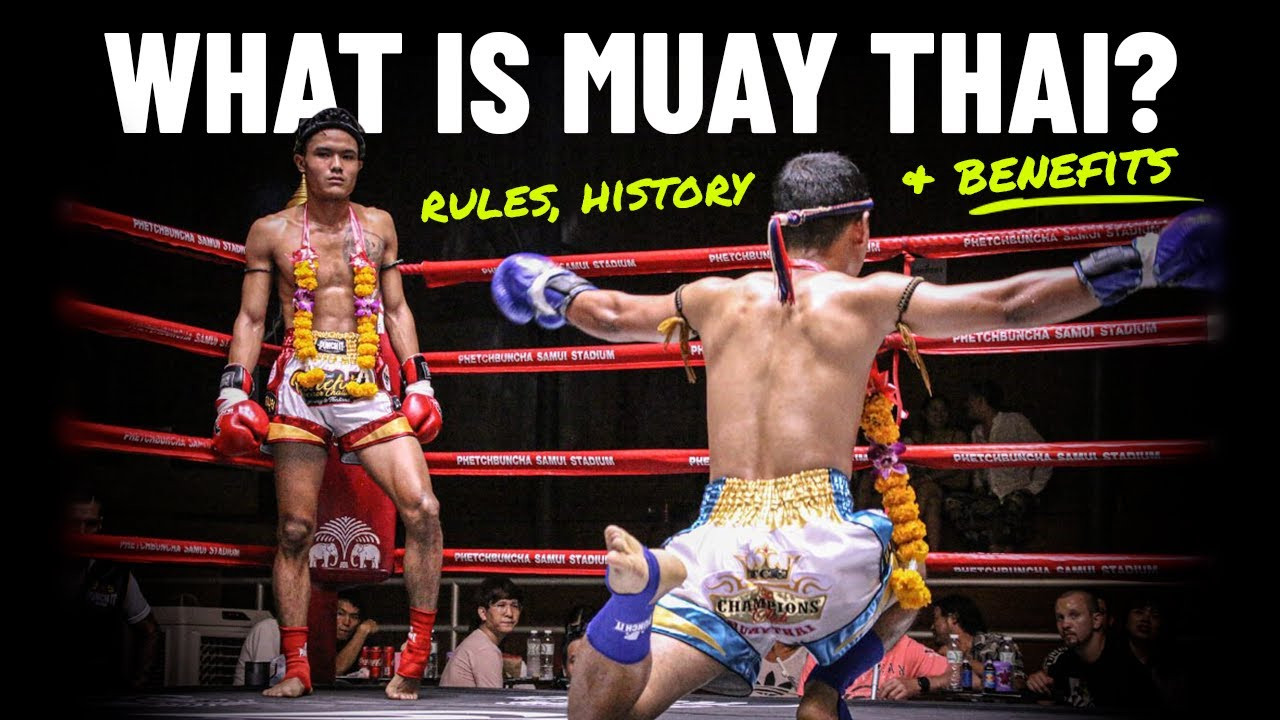What Is Muay Thai?

Muay Thai has long been a popular combat sport in Asia and a striking art among MMA fighters. In recent years, this popularity has trickled down, resulting in the appearance of more and more gyms that specialize in Muay Thai. Despite its growth, many people may only have a foggy idea of what Muay Thai is.
To help provide some background information, this blog will follow along with the video of Alby Tam of Combat Culture in San Francisco and help answer the most basic questions about Muay Thai: where it comes from, its general rules, and even some of its benefits.
History of Muay Thai
Muay Thai or Thai boxing is a traditional form of martial art that was developed in Thailand. Unfortunately, its history is not that well documented, but it is clear that Muay Thai can trace its origins back to the Khmer empire, which ruled much of Southeast Asia from the ninth to the fifteenth centuries. The same can be said of other martial arts from the area, including Mauy Lao, Pradal Serey (Cambodian boxing), and possibly even lethwei (Burmese kickboxing). Each of these disciplines then evolved to become their own unique style of martial art.
What Does a Fight Look Like?
Muay Thai is a form of standup combat that includes striking, grappling, and sweeps. Strikes can involve fists, elbows, knees, and shins, which earned Muay Thai the nickname, the art of eight limbs. Meanwhile, groin strikes, headbutts, strikes to the back of the head, and strikes to the spine are not allowed. Fighters are also prohibited from striking if their opponent is on the ground.
Fights are held in a four-sided ring and are divided into rounds. The number of rounds in a Muay Thai fight is variable, but rounds tend to be three minutes in length and separated by one-minute breaks. A fight will be considered over once one of the following happens: knockout, technical knockout, or referee’s stoppage. If none of these have happened at the end of a predetermined number of rounds, a winner will be named based on points.
Attire
Fighters wear boxing gloves and shorts. The gloves are distinct from the gloves used in Western boxing. They contain more padding to help fighters block kicks, and they are more malleable so that fighters can engage in clinching. The shorts are a shorter cut than boxer shorts or even athletic shorts. This is to allow for greater flexibility when throwing kicks or knees.
Techniques
The techniques in Muay Thai are very similar to the techniques in other striking arts. Punches include jabs, hooks, crosses, and uppercuts. Kicks are similar to other types of kickboxing and include leg kicks, roundhouses, and push kicks. Knees include the straight knee, the round knee, and the knee inside the clinch. For elbows, the most common are the horizontal elbow, the up elbow, and the spinning back elbow.
Clinching is used to set up inside attacks, especially elbows and knees. Clinching can also be used defensively to neutralize an opponent or to slow down the fight.
As noted above, sweeping is allowed. Throwing is not.
What Does Training Look Like?
Fighters in Thailand may start training Muay Thai as young as six or seven years old. Kids this young typically come from less fortunate backgrounds and use Muay Thai as a way to bring the family out of poverty. As one gets a little older, competition becomes a regular occurrence. Fighters in their late teens and early twenties may compete up to four times per month as they work to gain experience, build a reputation, and participate in larger and more prestigious fights. More famous fighters will typically only fight once per month or sometimes even less often.
In addition to starting early, Muay Thai fighters tend to retire early, oftentimes in their twenties. They will then move on to a coaching role. However, as the sport spreads to more international audiences, some fighters are continuing on into their thirties and even their forties.
The training schedules for Muay Thai fighters are also grueling, involving at least two sessions per day: one in the morning and one in the afternoon. Some of the staples of training include running, jump rope, bag work, pad work, and clinching. Sparring tends to be a bit more controlled given how busy Muay Thai fighters’ schedules are. Especially for younger fighters, they can’t risk even minor injuries given how many fights in which they are expected to participate. Sparring is mostly about perfecting technique, timing, and strategy.
What Are the Benefits of Muay Thai?
Before getting into the benefits of Muay Thai, Alby makes a point of really emphasizing that anyone can do it. In Alby’s many years traveling the world, only around 10% of the people he’s known who train Muay Thai actually compete even semi-professionally. Therefore, it doesn’t matter how old you are or what kind of shape you’re in. Alby himself was a pack-a-day smoker, overweight, and in his late twenties when he took his first class, but he was still able to pick it up, get into shape, and ultimately become a healthier version of himself.
This brings up one of the biggest benefits of doing Muay Thai: It will improve your physical health by helping you get in shape. It is a serious workout that improves cardio, burns calories, and builds muscle. Muay Thai is also good for your mental health. On the one hand, it will help with mental dexterity and focus. On the other hand, by learning to defend yourself, you will gain a greater sense of self-esteem, as well as more confidence.
Finally, regularly training at your local Muay Thai gym will give you the opportunity to become part of a community, make friends, and join the wider Muay Thai family.

